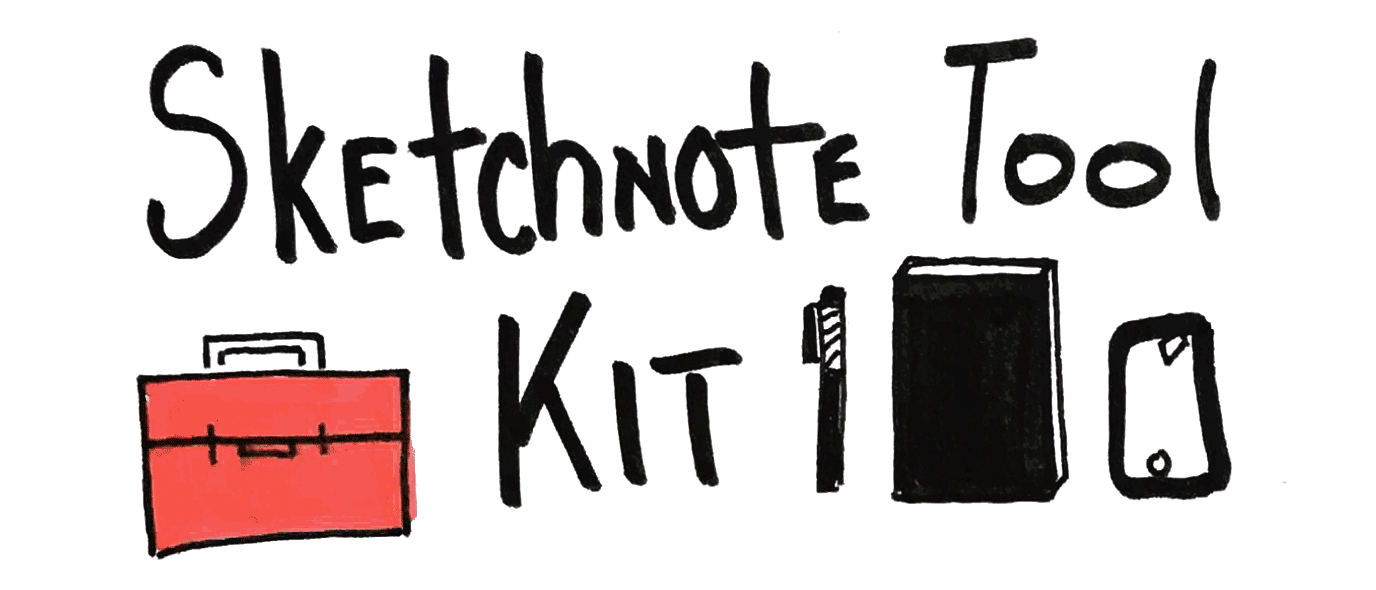
When I started creating sketchnotes, I used printer paper and a Pilot Precise V5 pen. It was as easy as that from a tools standpoint. I can get caught up in new gear, tools, software, and tactics, but at the beginning there is no replacement for simply starting.
I continued to progress and started creating visual notes for bloggers and speakers, along with sharing my own work on the blog and social media. I steadily improved the quality of my tools and upgraded a few things.
Even now, the cost of my entire setup is less than $50.
Here are the pens, pencils, paper, notebooks, and apps I’m using to create sketchnotes that have hundreds of shares and connected me to even more amazing people. I’ll break it down to a $25 toolkit and the $50 kit, along with what I’ll be upgrading to next.
The $25 Sketchnote Toolkit
- Pens: Pentel EnerGel NV ($12 for four, or buy one for $3).
- Paper (pick one): Moleskine Sketchbook or Printer cardstock or Sketch pad.
- Colored pencils.
- Scannable app on iPhone.
The most expensive item here is the Moleskine notebook ($15), so I might have saved an extra $10 by simply using notecards or printer cardstock. But I like having all my sketches in one place to review and see progress.
The Scannable app is fantastic (and free), the best document capture app I’ve found for the iPhone. Plus it’s made by Evernote and syncs nicely with their software, keeping your sketches backed up online.
The $50 Sketchnote Toolkit
All the above, plus…
- Pens: Sakura Pigma Micron sets in black and colors.
- Paper: Range of notebook sizes, along with a small blank pocket notebook for quick ideas. FieldNotes or Moleskine Cahiers are great for this.
- Carbo app on iPhone.
Upgrading my pen game was the next step in sketching, and I wish I had done it earlier. The relative low cost of getting a set was a barrier worth scaling, since they’re in the $10-20 range depending on the quantity.
Sakura’s Pigma Micron set came recommended by other artists like Sean McCabe and Wendy Mac. The colors are particularly bright and vibrant, really popping off the page and screen when scanned.
I always keep a small notebook in my pocket now, and attempt to spend my “waiting time” sketching something rather than scrolling through Twitter again. Even if I don’t have a specific idea to sketch, I’ll practice faces or fonts.
The Carbo app is amazing, so glad I found it on the App Store’s Productivity recs. Here’s why it’s better than Scannable (though Scannable captures color better). I’m able to make small edits inside the app! Before I’d load it into editing software and move elements around, or erase little mistakes. Now I can do it in the app! Worth the $3.99 sale price, but I’d pay full price now ($7.99).
What’s Next

I’ve been bouncing around on what’s next for my sketch kit, do I get an iPad Pro with the Apple Pencil (big jump), a regular iPad with another app stylus (like Paper), or something else?
I’ve decided on something else, a Wacom tablet. Specifically the Intuos Art tablet. There’s a bigger post to come on this reason, but here it is in a nutshell.
Sketching has been a practice where I have avoided being caught in shiny object syndrome. Bumping up my equipment to a $500 iPad or $1K iPad Pro flies in the face of that! Of course I would use it for other things, but I’m also rationalizing the purchase that way.
A Wacom tablet forces me to continue creating sketches, not sifting through apps and getting notifications. It gives me the power of live editing and scalable graphics, saving me hundreds of dollars too (it’s $99 for the small, $199 for the medium).
I’ll be updating this toolkit regularly, thanks for checking it out. If you have any questions please email me here [matt @mattragland.com] or ask on Twitter @mattragland.
Disclosure: Some of the products are linked to my Amazon Associate account. So if you buy from these links I receive 5% or something. Just a heads up.

Leave a Reply